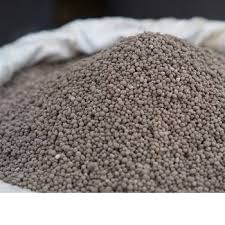
Nov . 11, 2024 21:11 Back to list
super triple phosphate 0460
Understanding Super Triple Phosphate (STP) 0-46 Importance and Applications in Agriculture
Super Triple Phosphate (STP) is a highly concentrated phosphatic fertilizer widely utilized in agriculture to enhance soil fertility and boost crop yields. The designation 0-46 indicates the nutrient composition of the fertilizer, where 0 represents the nitrogen content and 46 relates to the phosphorous pentoxide (P₂O₅) content. This article explores the significance of STP, its manufacturing process, its benefits, and its application methods in crop production.
1. The Importance of Phosphorus in Agriculture
Phosphorus is an essential macronutrient for plants, playing a pivotal role in several physiological functions. It is a crucial component of DNA, RNA, and ATP (adenosine triphosphate), which are vital for cellular function and energy transfer in plants. Phosphorus contributes to root development, flowering, and fruiting, significantly impacting crop quality and yield. Therefore, proper phosphorus management is critical for successful agricultural practices.
Since phosphorus is often less available in soils, especially in calcareous and alkaline soils, the application of phosphorus fertilizers like STP becomes essential in helping farmers overcome nutrient deficiencies. This ensures that crops receive adequate nutrition for optimal growth.
2. Manufacturing Process of Super Triple Phosphate
Super Triple Phosphate is produced from phosphate rock through an acidulation process. The production involves treating phosphate rock with phosphoric acid, which results in the formation of water-soluble monocalcium phosphate. Following this, the product is further processed, typically by removing the remaining impurities and drying the compound to produce a fine powder.
This production technique ensures that STP contains a high concentration of phosphorus, making it an efficient choice for farmers looking to enhance soil nutrient levels without over-applying fertilizers. The concentration (46% P₂O₅) allows for smaller application volumes compared to other phosphorus fertilizers.
3. Benefits of Super Triple Phosphate
super triple phosphate 0460

The utilization of STP comes with several advantages that make it a preferred choice for farmers
- High Phosphorus Content With 46% available phosphorus, STP provides a substantial nutrient supply that can significantly improve plant growth and productivity. - Enhanced Root Development The phosphorus provided by STP is crucial for root formation, which leads to better nutrient uptake and overall plant health. - Improved Yield Quality STP application not only enhances crop yield but also improves the quality of produce, resulting in higher market value. - Versatility STP can be used for various crops, including grains, fruits, and vegetables, making it a versatile fertilizer option in diverse agricultural settings. - Environmental Benefits With its efficient nutrient release, STP helps minimize the risk of phosphorus runoff into water bodies, promoting sustainable agricultural practices.
4. Application Methodologies
Applying STP requires careful consideration to maximize its effectiveness while minimizing potential negative impacts on the soil and environment. Some recommended application strategies include
- Soil Testing Conducting soil tests to determine existing nutrient levels is crucial. This helps farmers make informed decisions on the amount of STP to apply. - Proper Timing The best time to apply STP is during soil preparation or planting, ensuring that phosphorus is available when plants need it most. - Incorporation into Soil For optimal uptake, STP should be incorporated into the soil rather than left on the surface, as this minimizes losses due to erosion and runoff.
- Complementing with Other Nutrients Since STP contains no nitrogen, it is often advisable to use it in conjunction with other fertilizers that provide nitrogen and potassium to ensure comprehensive soil fertility.
Conclusion
Super Triple Phosphate (0-46) stands out as a vital resource in modern agriculture, providing a concentrated source of phosphorus crucial for plant development and maximizing crop yield. As farmers face increasing pressures to produce more food sustainably, understanding and utilizing fertilizers like STP can play a significant role in enhancing agricultural productivity. Proper application and management of STP can lead to improved soil health, making it an integral component of effective nutrient management strategies in agriculture.
-
10-10-10 Organic Fertilizer - Balanced NPK Formula
NewsAug.02,2025
-
Premium Organic Manure Compost for Eco Gardens
NewsAug.01,2025
-
Organic 10-10-10 Fertilizer | Balanced Plant Nutrients
NewsJul.31,2025
-
Premium Amino Acid Fertilizer | Rapid Plant Growth Booster
NewsJul.31,2025
-
10 10 10 Fertilizer Organic—Balanced NPK for All Plants
NewsJul.30,2025
-
Premium 10 10 10 Fertilizer Organic for Balanced Plant Growth
NewsJul.29,2025
